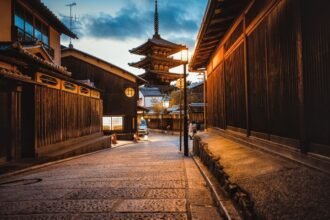How Is Climate Change Impacting Pacific Tourism?
Travelers especially like the Pacific Islands, known for their immaculate beaches, glistening clean seas, and rich rainforests. Many island nations’ economies depend on tourism, but growing worry over the continuous consequences of climate change is justified.
- How Is Climate Change Impacting Pacific Tourism?
- Why Are Low-Lying Atoll Nations Especially Vulnerable?
- What Is the Rising Threat of Cyclones?
- How Are Fiji's Local Challenges Linked to Its Global Appeal?
- What Potential Conflicts Might Arise Over Water Resources?
- How Are the Cook Islands Adapting to Climate Change?
- How Do Pacific Communities Show Resilience in the Face of Challenges?
The Pacific Tourism Organisation chief executive said, “Pacific Island leaders have declared climate change as the foremost threat to the livelihoods, security, and well-being of Pacific communities.” “Without quick and creative response, the future of tourism in the region remains highly uncertain.”
Why Are Low-Lying Atoll Nations Especially Vulnerable?
Although every Pacific island is at risk, low-lying atoll nations such as Tuvalu, Kiribati, Marshall Islands, and the Federated States of Micronesia face the most difficulties.
These islands are especially susceptible to flooding from increasing sea levels, particularly at king tides. Furthermore, people battled with access to fresh drinking water because of erratic rainfall patterns and extended dry spells.
What Is the Rising Threat of Cyclones?
Tropical storms, ranked from one (the weakest) to five (the strongest), pose a hazard that is growing increasingly urgent. Climate models indicate a possible change toward fewer but more powerful cyclones. Still, Tonga residents see a rise in the frequency of intense storms.
Particularly exposed is Nomuka, a little triangle island in Tonga’s Ha’apai archipelago. “We nearly annually live with cyclones. An associate dean at the University of Auckland Business School and a New Zealand-Tonga Business Council member, I grew up there and generally find one or two that come in for a direct whack. “But these days, we are noticing more of those category four or five cyclones arriving far more regularly.”
How Are Fiji's Local Challenges Linked to Its Global Appeal?
Former British colony Fiji hosted 929,740 guests last year, mainly from Australia, New Zealand, North America, and China. Still, the nation is also dealing with the effects of climate change. According to a Mamanuca Environment Society spokesperson, rising temperatures are causing problems in this area of Viti Levu, the most oversized island in Fiji. “Water security in terms of climate change is a major risk,” she says. “Saltwater is currently invading most of the freshwater sources formerly sufficient for human consumption. Rising sea levels are erasing beachfronts; increasing sea water temperature is causing coral bleaching outbreaks.
What Potential Conflicts Might Arise Over Water Resources?
As climate change worsens, the question of drinking water is becoming more divisive. “Drinking water is progressively becoming a problem in some places,” says a sustainable tourism lecturer. “There could be conflict with the community since visitors essentially consume the water local people need.”
Recent studies in the Cook Islands and Fiji exposed an astonishing degree of denial and fatalism regarding climate change. People were a bit fatalistic in the sense that there is not much we can do about it; this is a little of denial. The lecturer points out that it was readily discounted as a worldwide issue with little action the Pacific Islands could influence. I was a little taken aback that individuals could feel somewhat powerless. It is nearly like, “Let’s not discuss it.” Perhaps they are fixated on restoring the growth of the travel industry. It does not fit the narrative. It’s a complicated subject.
How Are the Cook Islands Adapting to Climate Change?
Famous for New Zealanders and Australians, the Cook Islands present a direct challenge for tackling climate change. The Cook Islands Tourism Corporation’s head of destination development admits the difficulties of discussing global warming inside the country. “If we confront reality, major adaptation strategies will be required. This is a difficult conversation, he notes. “There is also the brutal truth that travel significantly contributes to global warming and must be addressed. How, then, might we find answers?
He underlines that although the Cook Islands have little carbon impact, they are the first victims of climate change. “We are on the front line of climate change, but we are a tiny percentage of the world population, and thus we have a very small carbon footprint,” he says.
How Do Pacific Communities Show Resilience in the Face of Challenges?
The people living in the Pacific Islands show excellent resilience despite their awful circumstances. Social structures on the islands differ; familial groups, community networks, and diaspora support are essential. “They will value all the help that is given, especially in the aftermath of any natural disaster, but being treated with a victim mentality isn’t quite helpful,” says an assistant dean at the University of Auckland. Should help arrive, we will be appreciative; should it not, we will make every effort to survive. You rely on your neighbors to be of assistance when necessary. Above all, it is a trust mechanism.
Climate change and their reliance on tourism present the Pacific Islands with great difficulties. Still, as they negotiate these unknowns, their tenacity and inventiveness radiate.








